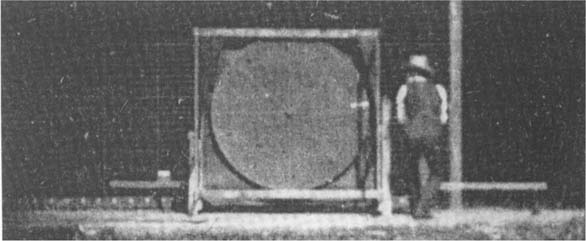
Topics in Photographic Preservation 1999, Volume 8, Article 1 (pp. 1-10)
The Photographic History Collection at the National Museum of American History, Smithsonian Institution, has significant holdings of the work of the nineteenth-century photographer Eadweard Muybridge. Muybridge's pioneering experiments with the sequential photography of moving figures were instrumental in the later invention of the motion picture. Included in the Smithsonian collection are artifacts relating to Muybridge's most important work, Animal Locomotion: An Electro-Photographic Investigation of Consecutive Phases of Animal Movements, a group of 871 collotype prints published in 1887 under the auspices of the University of Pennsylvania. In addition to the collotypes, the National Museum of American History (NMAH) has 430 sets of gelatin dry-plate positive transparencies mounted on heavy glass supports, and 850 sheets of cyanotype contact strips. While other institutions have examples of the composite positives, the Smithsonian cyanotypes (as far as I am aware) are the only ones in existence. They are especially important because they constitute the only record of Muybridge's original glass negatives, the whereabouts of which are unknown. The positive transparencies and cyanotypes offer new information on the highly complicated process of photographing human and animal subjects in motion and the production of the final collotype prints.
The history of Animal Locomotion really begins in 1872, when Leland Stanford, former governor of California, president of the Central Pacific Railroad, and avid horse racing enthusiast, commissioned Eadweard Muybridge to photograph his famous race horse. Occident. Stanford hoped to settle the controversy over “unsupported transit”: whether a horse trotting at full speed ever has all four feet off the ground at once. Using a special exposing apparatus and wet-collodion plates, Muybridge managed to obtain an indistinct silhouette of the horse with all four feet unsupported. With financial backing from Stanford, Muybridge made a full scale study of the horse in motion, using series photographs to document the gaits of running and trotting horses at Stanford's Palo Alto farm Muybridge and Stanford subsequently disagreed over the copyright to this work, and Muybridge lost Stanford's financial support.
Prior to this setback Muybridge had been contemplating an even more ambitious work. While in Paris in 1881 he had the chance to experiment with the new gelatin dry-plate process and found it far superior to the wet-collodion process. The dry-plate process would allow him to make much sharper and more detailed photographs with shorter exposures. He was also inspired by his meeting with Etienne-Jules Marey, Professor of Natural History at the College de France, who, like Muybridge, had been documenting the motion of animals. Muybridge planned a mammoth publication of sequential photographs showing men and women engaged in various physical activities, as well as the movements of wild and domestic animals and the flight of birds.
Having lost Leland Stanford's patronage, Muybridge had to seek other financial support for his proposed project. He managed to interest Dr. William Pepper, Provost of the University of Pennsylvania. The project was not funded by the University, but by Dr. Pepper and a committee of five Guarantors, who put up a total of $30,000 with the stipulation that they be repaid with interest from sales of the publication.
Preparation for the work began in the fall of 1883. A photographic laboratory was set up in the basement of the University's Biological Hall and an open-air studio was fenced off in the courtyard of the Veterinary Hall. A track approximately 120 feet long was covered with corrugated rubber for the models' comfort. The subjects passed in front of a screen that was divided into squares to aid in plotting their movements. Actual work at the studio commenced in the spring of 1884, beginning with the photographing of human models. Some of the animal sequences were also taken at the enclosure on the University campus, and those of the wild animals were taken at the Philadelphia Zoological Gardens. Most of the horses were photographed at the Gentlemen's Driving Park outside Philadelphia. Muybridge also photographed patients from the Blockley Hospital for the Poor, contrasting the abnormal movements of persons with disabilities with the movements of healthy individuals.
At the University of Pennsylvania, Muybridge at first used a wheel camera that took exposures with two rotating discs, similar to an apparatus used by Professor Marey. Among the cyanotypes in the NMAH collection is a series of photographs of the wheel exposing.

Figure 1: cyanotype, Wheel Camera, negative series #1481
Later, a configuration of three cameras was used, for front, back, and side views. Each camera was equipped with a plate holder 36″ long. As the subject passed in front of the cameras, an electrical mechanism released the twelve shutters in sequence.
According to Gordon Hendricks' Eadweard Muybridge: The Father of the Motion Picture (1975). Muybridge made his own negatives by cutting 8″ × 10″ plates into smaller pieces of the appropriate size. These individual negatives were placed in the plate holder. Hendricks believed that the negatives were developed by a special process that resulted in glass positives, called “diapositives,” which were mounted on a large glass plate in proper sequence.1 When Hendricks did the research for Father of the Motion Picture in the 1970s, the Smithsonian cyanotypes had not yet been made available to the photographic community.
The evidence of the cyanotypes leads me to a very different explanation of Muybridge's process. I believe that the 36″ plate holder held three 12″ long glass strips, rather than twelve small pieces as Hendricks suggests, and that the cyanotypes are contact prints of these glass negatives. This became apparent to me when I was assigned to treat and rehouse the collection in the mid-1980s. Michelle Delaney, Museum Specialist for the Photographic History Collection at NMAH, and Marta Braun, Professor of Film and Photography, Ryerson Polytechnic University, Toronto, have subsequently studied the cyanotypes and reached the same conclusions. Muybridge and his assistants may or may not have used the cyanotypes as proofs from which to choose the most successful sequences.
The cyanotype strips are approximately 12″ long × 1 1/8″ wide, with four 2 1/4″ frames to a strip or twelve exposures in all. The divisions between the frames are not sharp lines, but are dark blue areas about 1″ wide with indistinct edges. They include a much wider view of the outdoor studio than we see in the published collotypes and include details that were cropped out of the published collotype prints. One can clearly see the setup at the outdoor studio, with the corrugated rubber track, the grid backdrop, various makeshift props for the models, and the other cameras. Assistants sometimes appear in the background. In the baseball series, a man can be seen pitching the ball; in the animal series, a trainer uses a broom to urge the creature along from behind. Often there are notations on the proofs. The numbers of the individual frames were sometimes painted on the back of the glass negative, and appear as large white numbers on the cyanotype. Similarly, frames that were to be omitted were crossed out, and frames that were to be included in the series were circled.
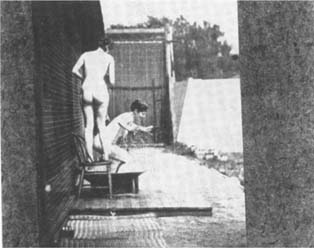
Figure 2: cyanotype, Pouring Water Over a Woman, Animal Locomotion #406–407
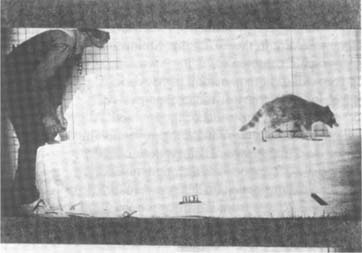
Figure 3: cyanotype, Trainer with Racoon series negative #1197
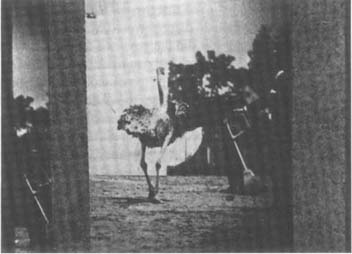
Figure 4: cyanotype, Trainer with Ostrich Series negative #1201
At first glance, it can be difficult to perceive that the cyanotypes and the finished collotypes are products of the same negative. The arrangement of the mounted cyanotypes often differs from the collotypes; frames have sometimes been omitted or two negative sequences combined; the front and back views have been enlarged and severely cropped. Nevertheless, in every set of cyanotype proofs for which there is a published Animal Locomotion collotype, one can compare each individual frame with the corresponding frame in the collotype and find that the pose of the figure is exactly the same. Animal Locomotion #43 is a good example for comparison. It depicts a woman walking and splashing water from a basin with her hand. The movement of the water is caught in mid-air, making a distinctive configuration that could never be duplicated. In every frame, the movement of the figure and the splash of the water in the cyanotype proof and the collotype is identical. The only difference is the size and cropping.
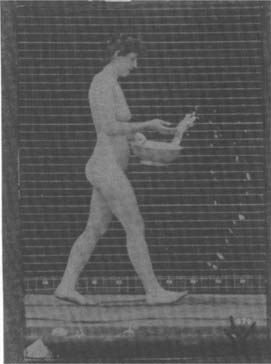
Figure 5: cyanotype, Sprinkling Water Animal Locomotion #43
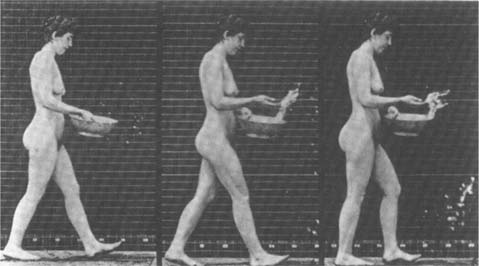
Figure 6: collotype, Sprinkling Water, Animal Locomotion #43 Compare the center figure with the collotype on page 4
My colleagues and I believe that the original negatives were enlarged on small gelatin dry plates, cropping the images to exclude extraneous background. They were then taped to a sheet of thick support glass to form composite positives. In the introduction to the Dover edition of Animal Locomotion, Anita Mozley states that Muybridge's assistant, H.L. Bell, developed the negatives and made the positive transparencies, and that the composites were assembled at the University of Pennsylvania.2 The composite positives were contact printed onto a gelatin film base to make the composite negatives from which the collotype printing plates were made.3 Hundreds of collotypes were printed from these plates.
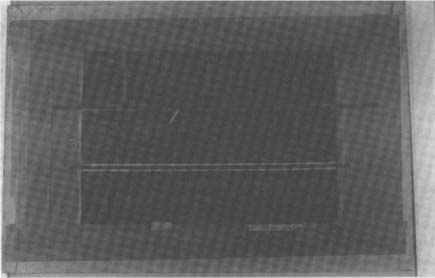
Figure 7: composite positive, Man Running, Animal Locomotion #7 Notice the diagonal piece of tape, middle row, third from left, used to mend a broken plate. This tape appears in the negative and the finished collotype.
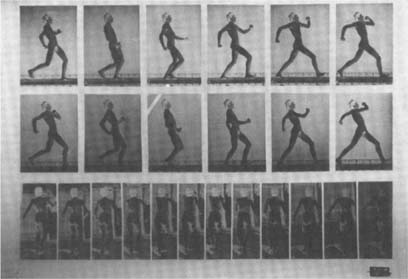
Figure 8: composite negative, Man Running, Animal Locomotion #7

Figure 9: collotype, Man Running, Animal Locomotion #7S
The Photogravure Company of New York contracted to print the collotypes and distribute Animal Locomotion, acting as agents for the Guarantors. This proved to be an unwise arrangement, leading to legal and financial entanglements between the Photogravure Company, Muybridge, and the committee of Guarantors. A prospectus explained the intention and scope of the work and listed the titles of the 781 collotype plates. Subscribers could choose 100 plates for $100, or could purchase the complete set of 871 for $600. When too few subscriptions were sold to cover printing costs and repay the Guarantors, Muybridge went on a world tour with his lantern slides and zoopraxiscope to drum up additional business. (The zoopraxiscope is a Muybridge invention employing counter-rotating discs to project images of people or animals in rapid sequence, simulating motion.) He gave demonstrations and lectures at the World's Columbian Exposition in Chicago in 1893, and his “Zoopraxical Hall” has been called the first movie theater.
Approximately $2,000 was still owed to each of the Guarantors, and to make matters worse, the Photogravure Company was suing for printing and storage expenses. In 1896 the Photogravure Company declared bankruptcy, and the unsold collotype prints and the composite gelatin negatives were confiscated by the sheriff. Dr. William Pepper, now retired from the University of Pennsylvania, came to the rescue and out of his own funds paid what was owed to the Photogravure Company, returning the collotypes and the composite gelatin negatives to the University. He paid Muybridge $500 for the right to distribute the collotypes and to print further impressions from the negatives.4
Following the completion of Animal Locomotion and a rather unsatisfactory settlement of his financial affairs, Muybridge returned in 1896 to his birthplace in Kingston-Upon-Thames. England. He sold the composite positive transparencies and other materials to the J.B. Colt Company of New York, a producer of projectors and lantern slides. While it is logical to assume that the cyanotype strips were printed at the University of Pennsylvania and used by the Muybridge team in choosing the best series for publication, they are not mentioned in Muybridge's laboratory notebooks (now at George Eastman House) or in any of his correspondence. This raises the possibility that they were printed at the J.B. Colt Company. They were almost certainly mounted there; the mounts appear to be old packing boxes from Colts', as indicated by several handwritten notations and stenciled addresses on the boards.5
In 1898 the J.B. Colt Company also went bankrupt, and the Muybridge material in Colts' possession was sold at a sheriff's auction for payment of their debts. The cyanotypes and composite positives were purchased by the prominent New York architect Isaac Newton Phelps Stokes. Stokes, having left them in his basement for twenty-nine years, donated the Muybridge materials to the Smithsonian in 1927. In a letter to the Institution, he apologized for the fact that “a large part of the plates have been irreparably injured by dampness.… The cases will have to be very carefully handled as they were never properly packed, and the wooden bottoms have rotted.” The artifacts were undoubtedly boxed up during the Colts' bankruptcy crisis, taken to the sheriff's sale, bought by Mr. Stokes, stored in his basement, and given to the Smithsonian without ever having been unpacked.
After their arrival at the Smithsonian, the cyanotypes and composite positives were stored at the U.S. National Museum (now the Arts and Industries Building). The accession memorandum, dated December 22, 1927, records “1,361 specimens of photographic plates and prints.”6 At some point the wooden boxes were packed in larger wooden crates and moved to the Smithsonian's off-site storage facility at Silver Hill, Maryland. In 1977 these crates were returned to the National Museum of American History and stored in the basement until they were opened for treatment and rehousing by NMAH conservation staff in 1984. The project continued intermittently until 1989.
The cyanotypes are printed on good quality, medium weight, off-white paper. A variable number of cyanotype strips or individual frames are adhered to a cardboard mount with a colorless adhesive that may be starch paste or dextrin. The mounts, which are 13″ high × 21 1/2″ wide by 1/8″ thick, are made of coarse, grayish-brown cardboard. A printed label is adhered across the top, with blanks for the series negative number, Animal Locomotion serial number, title, classification (nude, semi-nude, or clothed men or women, domestic or wild animals) and the number of laterals (side views), front forshortenings, and rear forshortenings. The labels were filled in by hand, and appear to have all been written by the same person. The handwriting is unlike Muybridges's, examples of which are seen in his correspondence at the University of Pennsylvania Library. Two-hundred-seven cyanotype sheets have no Animal Locomotion number, only a series negative number. These represent negatives that were never printed as collotypes and constitute the only record of images not selected for Animal Locomotion. The cyanotypes came to the Smithsonian packed in narrow, vertical boxes made of rough wood. The boxes had no lids, leaving one horizontal edge of the cardboard mounts exposed. Because the mounted cyanotypes were packed very tightly, dirt could not penetrate. The tight packing also prevented the mounts from shifting in the boxes, and mechanical damage to the cyanotype strips is slight. In spite of their poor-quality mounts and the fact that they were stored in unsealed wooden boxes, most of the cyanotypes are in excellent condition. Their color is bright blue and the paper is not discolored or brittle.
One box, however, had been sitting in water. The boards were rotted and crumbly. The 90 cyanotype sheets in this box were all more or less water damaged. The cardboard mounts were warped and cockled, and some were stuck together. The cyanotypes had been attacked by black, powdery mold, which was growing profusely on the cardboard and the cyanotype strips. Many of the strips were very badly deteriorated by the mold and water. The paper was pulpy and riddled with holes, and the blue color of the cyanotypes was mottled and faded. The fading corresponded to the heaviest concentrations of mold. It is possible that an increase in alkalinity caused the fading of the cyanotypes. Cyanotypes are known to prefer a somewhat acidic environment, and can fade when exposed to alkalinity. The damaged mounts and proof sheets had a pH of 7. Because the fading has such a spotty, mottled appearance, and seems to correspond to the location of heavy mold growth, it was further suspected that an alkaline by-product was being given off by the mold. The proof sheets in the other crates, which were not subjected to water and mold, had a pH of 5.5.
After removing the cyanotypes from their boxes, those that were not mold damaged were cleaned with a soft brush. A few required minor mending with wheat starch paste and Japanese tissue. The mold-infested cyanotypes were brushed and vacuumed in the fume hood. The loose mold growth could be removed, but dark staining remained on the cardboard and the cyanotype paper. Loose strips were readhered with wheat starch paste and torn strips were mended. After the proof sheets had been cleaned and repaired, they were put in numerical order, interleaved with lightweight unbuffered 100% rag paper, and housed in lignin-free boxes.
The composite glass positives consist of ten to forty-eight individual gelatin dry-plate transparencies which have been taped, emulsion side up, to a sheet of support glass with thin strips of black paper, surrounded with a border of orange masking paper and taped around the edge with tan paper tape. There is great variation in the size of the individual positives. They range from 2 3/4″ high × 1 1/2″ wide to 3 1/4″ high × 4 1/8″ wide, and sometimes several sizes are found on one composite plate, to accommodate the view of the figure.
Three-hundred-forty-three of the support glasses are 16″ × 24″ and eighty-seven are 16″ × 32″; all are 1/8″ thick. A black rubber stamp “copyrighted 1887 by Eadweard Muybridge / published by J.B. Colt and Co.” is found on the masking paper, usually in the lower left. This was evidently added by Colts when they intended to publish the images as lantern slides. The series negative number and the Animal Locomotion plate number, as well as various other numbers of unknown significance, are written on the masking paper of some of the plates. Occasionally X's or numbers are painted with reddish-brown water-based paint on the back of the support glass. Glassine sheets are adhered over certain image plates. These may have been used to lessen the contrast or to lighten those images when the composite gelatin negatives were made. These artifacts also were packed in rough wooden boxes, usually about seventeen plates to a box, stacked one on top of the other, with no padding between. One of the boxes is marked “J.B. Colt and Co.”
The composite positive transparencies have suffered a great deal of damage during their travels, mostly due to water and breakage. Water has loosened the outside masking paper and the strips of tape that hold individual image plates to the support glass, occasionally causing plates to be lost. Water damage to the emulsion ranges from spots and tidelines where the emulsion has become sticky and discolored, to total dissolution of the emulsion with only a powdery black residue remaining. Many of the images are completely obliterated. Dampness has resulted in black or white mold growth on the outside masking paper. Often the paper has become pulpy due to being digested by the mold. Occasionally, mold is found on the emulsion.
Many of the support glasses and the individual positive plates are broken, and many of the positive images have been lost. Individual positives sometimes appear to have been deliberately removed by cutting the tape; these were always images of particularly attractive nude female models.
Glass deterioration byproducts were found on the outside and inside of the glass positives. On the emulsion side, these take the form of small, white, needle shaped crystals, often forming serpentine patterns or branching fan shapes. Liquid droplets with a pH of 8.9 were found on the glass side.
The composite positive transparencies were removed from the wooden boxes one at a time. A piece of double-walled acid-free corrugated board was carefully slipped under the plate so it could be safely carried to the work table. The emulsion and the orange masking paper were dusted with a soft brush. Any glass fragments on the emulsion were picked up with a Mini-Vac to avoid scratching. No attempt was made to remove debris that was solidly stuck to the emulsion. The support glass was cleaned with water to which a few drops of ethanol had been added. Badly broken support glasses could not be cleaned. Loose image plates were replaced in the proper location; broken plates were reassembled but not mended. A survey sheet was filled out for each plate. All measurements, numbers, notations, damage, and unusual features were recorded on the survey. The plates, protected by an acid-free paper cover sheet, were stored in shallow metal drawers padded with heavy blotting paper. The constraints of project guidelines did not allow for sorting them in numerical order at that time.
The Muybridge artifacts remained in their basement storage room until 1994. Then, as part of the museum's plan to transfer collections from the basement to the upstairs storage areas, the composite glass positives were rehoused in sink mats made of acid-free corrugated board and put in numerical order. Both the composite positives and the cyanotypes are now stored in new metal cabinets with the rest of the Photographic History collection on the fifth floor. A finding aid to the entire Muybridge Collection has been compiled. At long last, these important artifacts are available for researchers.
General information about Eadweard Muybridge and the Animal Locomotion project comes from the following three sources: Gordon Hendricks, Eadweard Muybridge: The Father of the Motion Picture (New York: Grossman, 1975); Robert B. Haas, Muybridge, Man in Motion (Berkeley: University of California Press, 1976); Anita Ventura Mozley, Introduction to Muybridge's Complete Human and Animal Locomotion: All 781 Plates from the 1887 “Animal Locomotion” (New York: Dover Publications, 1979). Hendricks, Haas, and Mozley used original source material from Muybridge's laboratory notebooks, now at George Eastman House, Rochester, New York; from his scrapbook in the Borough Library, Kingston-Upon-Thames; from correspondence in the Stanford University Archives and the University of Pennsylvania Library; from contemporary newspaper accounts; and from other miscellaneous sources.
1. Gordon Hendricks, Eadweard Muybridge: The Father of the Motion Picture, 160.
2. Anita V. Mozley, Introduction to Muybridge's Complete Human and Animal Locomotion, xxxii. Mozley is the former Curator of Photography, Stanford University Museum of Art.
3. Beaumont Newhall, “The George E. Nitzsche Collection of Muybridge Relics,” Medical Radiology and Photography (1950), 24–26. Newhall was curator of the George Eastman House in Rochester, N.Y. at the time of this article. George Nitzsche was Recorder Emeritus of the University of Pennsylvania. In 1949 he gave to Eastman House a collection of Muybridge material which included a large number of the composite negatives.
4. Robert B. Haas, Muybridge, Man in Motion, 181. This information comes from original documents in the University of Pennsylvania Library.
5. The cardboard mount of Animal Locomotion #354 has “Colt and Co.” written on the back. The mount of Animal Locomotion #439 has “Slide Dept.” written on the back. Animal Locomotion #464 has a pencil inscription on the front of the mount: “CO…” can be seen, and the rest of the word, possibly “Colt and Company” is hidden by the cyanotype strip. Professor Marta Braun is currently exploring the origin and purpose of the cyanotype strips.
6. All documents pertaining to the Stokes donation are from the NMAH accession files—accession #98,473, catalog #3856.